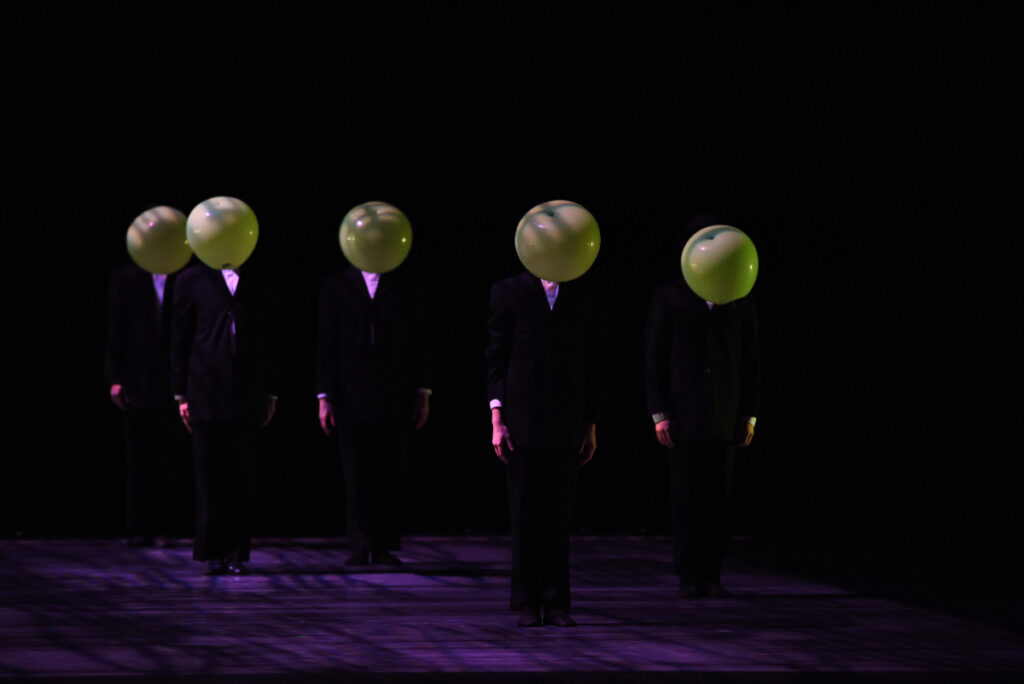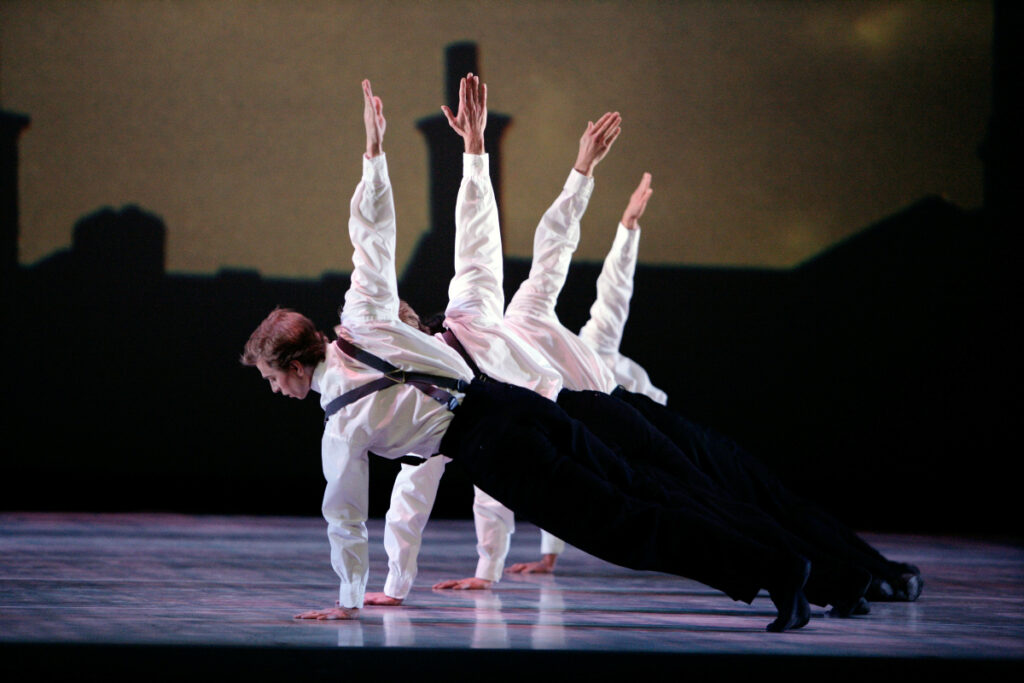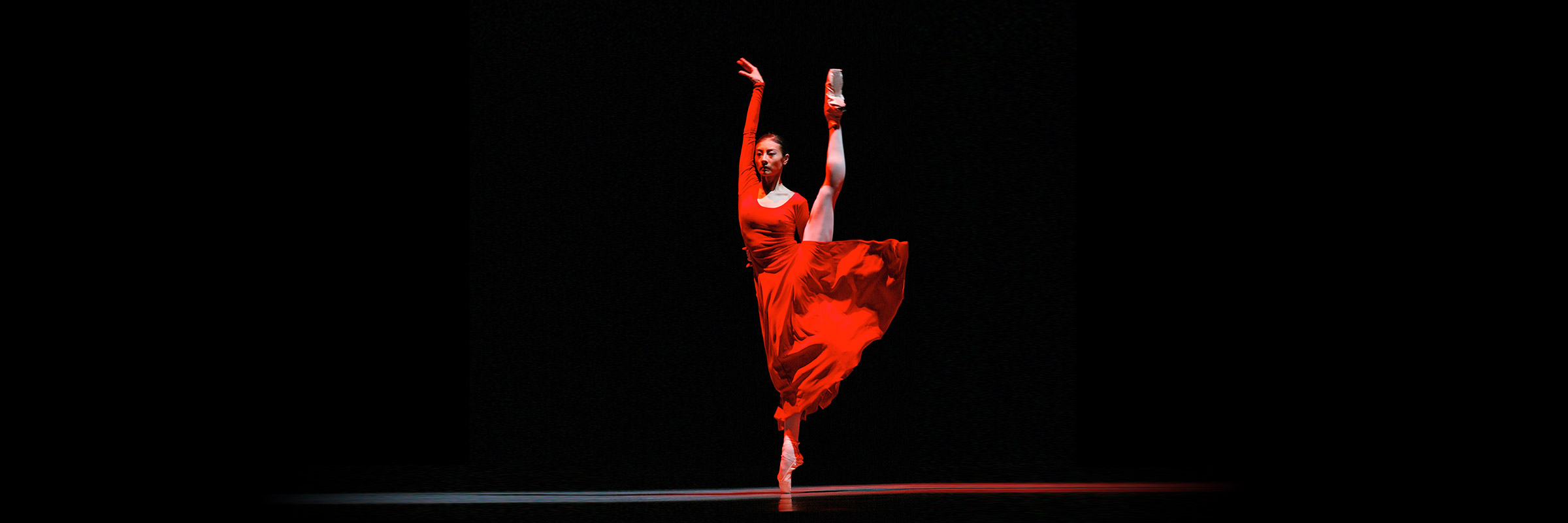About Possokhov’s Magrittomania
Inventive. Imaginative. Inspiring.
Magrittomania, Choreography in Residence Yuri Possokhov’s first commission for San Francisco Ballet, is as imaginative and surreal as its namesake’s art, and it made for an impressive choreographic debut. Few have entered the realm of choreography with the imagination, wit, and expressiveness Possokhov revealed when Magrittomania premiered in 2000.

Art forms other than dance often serve as inspiration for Possokhov, whose choreographic credits extend from San Francisco Ballet to the Bolshoi and Joffrey Ballets, Oregon Ballet Theatre, and beyond. Those who know surrealist painter René Magritte’s works will recognize the references the ballet makes to specific paintings—green apples, bowler hats, doves, lovers wearing shrouds over their heads—and those who don’t know the artist’s work can simply enjoy the bizarre, visually arresting world Possokhov has created. A brilliantly hued production design sets off the fluidity and sculpting of the body in space that Possokhov seems born to do.
Surrealism, an arts movement of the 1920s and ’30s that originated in France, frequently utilized dream imagery, spontaneous techniques, and unconventional juxtapositions. Belgian painter Magritte (1898–1967), according to Adrienne Gagnon, a curatorial associate at the San Francisco Museum of Modern Art, aimed “to expand conscious understanding of reality by presenting utterly improbable tableaux.” Though Possokhov presents similar improbabilities, he says the ballet isn’t about Magritte; it expresses his feelings “about the atmosphere in his paintings,” which are revealed through the central male character—the only character that is real, according to Possokhov. “When you look at a painting, you become involved in its world,” he said in 2000. “So [the man] becomes involved in this world, and becomes its center.”

Possokhov created the central woman’s role in Magrittomania for Principal Dancer Yuan Yuan Tan, his frequent partner when he was dancing. Working with Possokhov in this new role—he as choreographer, she as his muse—“was the first time I realized that he was such a great artist—a partner and also a creator,” Tan says. “When we put all the pieces together, it blew me away. He has an amazing imagination.”
Both of Tan’s primary dances in the ballet come with restraints: in her solo, one hand remains behind her back; in the pas de deux she wears a shroud. (The apocryphal story behind Magritte’s repeated use of shroud imagery is that as a boy he saw his mother, who had committed suicide, pulled from a river, and her dress had floated up over her head.) Possokhov showed Magritte’s painting The Lovers (the shrouded couple) to Tan, but he didn’t tell her what she should think or feel, she says: “Yuri gives you the freedom to feel it.” For Tan, the shroud means that these lovers have “a boundary; they have worries, something between them.” Magritte’s intent in creating the painting isn’t important; what matters is what the dancers bring to the dance. “You use your imagination,” she says.

These days, Possokhov is known for creating choreography that challenges his dancers, but Tan was just finding that out during the first rehearsals for Magrittomania. The pas de deux, she says, is “very difficult. Yuri can do it because he’s such a wonderful partner. But it was a good time. Sometimes we would argue, but we were allowed to have different opinions. After all, what shows onstage is most important.”
And what shows is Possokhov’s inventiveness, which Ballet Master Katita Waldo attributes to his willingness to take risks. “Magrittomania is not a safe ballet, but his subsequent ballets also haven’t been,” she says. “Yuri’s not afraid to push beyond the expected; he’s not going to limit himself. He wants that of his dancers too, which is wonderful—he’s very inspiring that way.”
by Cheryl A. Ossola
This production was part of the 2022 Season.
Header Image: Yuan Yuan Tan in Possokhov’s Magrittomania // © Chris Hardy








